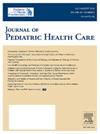优化青少年心理健康治疗:温暖交接的研究
IF 1.8
4区 医学
Q2 HEALTH POLICY & SERVICES
引用次数: 0
摘要
前言:本研究的目的是描述温暖交接(WH),并评估其在青少年中的使用和影响。方法:案例研究设计采用并行收敛混合方法。卡方分析和逻辑回归检验了转诊类型与初次行为健康预约的出勤率之间的关系以及其他变量。对青少年和临床工作人员进行半结构化访谈进行定性分析。结果:转诊类型与就诊次数有相关性(X2 = 6.06, df = 2, N = 145, p = 0.049)。转诊类型是出勤率的重要预测因子,与传统的内部转诊相比,现场WH的出勤率降低。(OR = 0.340, 95% CI [0.132, 0.880], p = 0.026)。定性访谈表明,卫生保健不仅仅是一种支持青少年需求的转诊机制。讨论:研究结果支持在诊所使用卫生保健服务来解决青少年行为健康需求。未来的研究需要评估长期结果和可行性。本文章由计算机程序翻译,如有差异,请以英文原文为准。
Optimizing Adolescent Mental Health Treatment: A Study of the Warm Handoff
Introduction
The purpose of this study was to describe the warm handoff (WH) and to evaluate its use and impact with adolescents.
Methods
A case study design utilized a parallel convergent mixed-methods approach. Chi Square analysis and logistic regression examined the association between type of referral and attendance at the initial behavioral health appointment among other variables. Qualitative analysis of semi-structured interviews with adolescents and clinical staff members occurred.
Results
A relationship was found between referral type and frequency of attendance (X2 = 6.06, df = 2, N = 145, p = .049). Referral type was a significant predictor of attendance with decreased odds of attendance with an in-person WH compared to a traditional in-house referral. (OR = 0.340, 95% CI [0.132, 0.880], p = .026). Qualitative interviews suggest that WHs are more than a referral mechanism, supporting adolescents’ needs.
Discussion
Findings support the use of WHs in clinics to address adolescent behavioral health needs. Future research is needed to evaluate long-term outcomes and feasibility.
求助全文
通过发布文献求助,成功后即可免费获取论文全文。
去求助
来源期刊

Journal of Pediatric Health Care
NURSING-PEDIATRICS
CiteScore
3.40
自引率
10.70%
发文量
140
审稿时长
24 days
期刊介绍:
The Journal of Pediatric Health Care, the official journal of the National Association of Pediatric Nurse Practitioners, provides scholarly clinical information and research regarding primary, acute and specialty health care for children of newborn age through young adulthood within a family-centered context. The Journal disseminates multidisciplinary perspectives on evidence-based practice and emerging policy, advocacy and educational issues that are of importance to all healthcare professionals caring for children and their families.
 求助内容:
求助内容: 应助结果提醒方式:
应助结果提醒方式:


